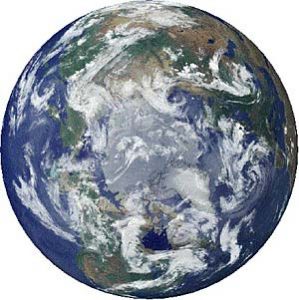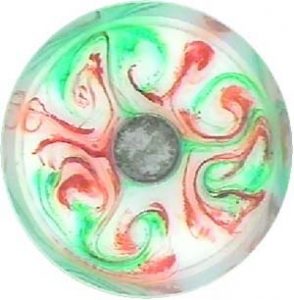Introduction | Tank – Hadley | Tank – Eddies | Atmosphere – Hadley | Atmosphere – Eddies | Theory | For Teachers | Wiki
Here we study the two main ‘ingredients’ that control the general circulation of the atmosphere:
- earth’s rotation
- differential heating (i.e. warming of the equator, cooling of the pole)
In the tropics the Coriolis parameter is small and earth’s rotation has a less profound effect than in middle-to-high latitudes where the Coriolis parameter is large.
We focus on both tropical (Hadley) and extra-tropical (eddying) circulation patterns. The Hadley circulation occurs at low latitudes (small rotation) and is axi-symmetric. The extra-tropical circulation (high rotation) is dominated by unsteady, non axi-symmetric motions familiar to us as weather systems. We study both regimes in the laboratory and using atmospheric data.
To set the scene, on the left below we see a view of the earth over the north pole showing swirling clouds associated with synoptic-scale weather systems. On the right we show a laboratory analogue of the weather systems in which an ice can induces a radial temperature gradient in a rotating tank of water. The presence of eddies in the tank, analogous to atmospheric weather systems, can be seen through the swirling dye patterns.
A view of Earth from space over the North Pole (courtesy of NASA/JPL) and a view of the eddies experiment from the camera co-rotating above the tank. (For more see Fig. 6.1 in the Marshall and Plumb textbook).

